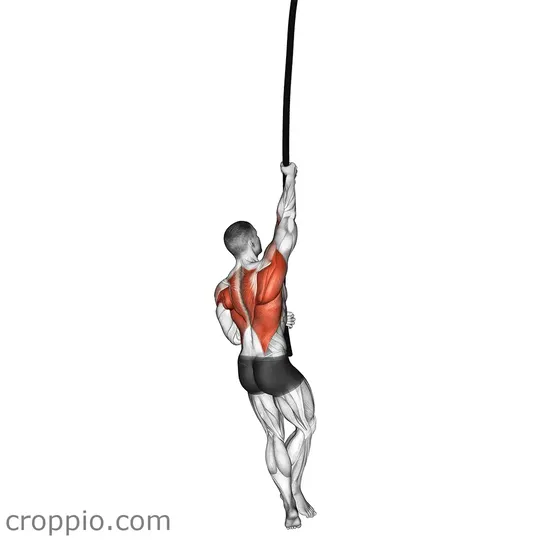Rope Climb

Muscles Involved
The rope climb is an exceptional full-body workout that primarily engages various muscle groups. The primary muscles targeted include the latissimus dorsi, trapezius, and biceps brachii, which work together to pull the body upward. The core muscles, including the rectus abdominis and obliques, play a crucial role in stabilizing the body during the ascent. Furthermore, the legs, particularly the quadriceps and gastrocnemius, assist with pushing off the rope to gain height. Secondary muscles, such as the forearm flexors, extensively engage to maintain grip strength and control throughout the climb.
Top Mistakes
- Neglecting proper grip technique, which can lead to slips and falls.
- Using the arms exclusively without engaging the core, resulting in fatigue.
- Failing to utilize the legs, which can minimize efficiency and increase strain on the upper body.
- Climbing too quickly, compromising form and increasing the risk of injury.
Execution Tips
- Begin by establishing a firm grip on the rope with both hands, positioning your hands about shoulder-width apart.
- Use your legs to your advantage by bending your knees and planting them on the rope to push yourself upwards; this helps alleviate pressure from the upper body.
- Engage your core muscles throughout the climb to maintain stability and prevent excessive swaying or arching.
- Move in a fluid motion, pulling with your arms while simultaneously pushing with your legs to create a rhythmic climbing pattern.
- Maintain an adequate breathing pattern; exhale during the pull and inhale while preparing for the next move.
Workouts
The rope climb can be incorporated into your workout routine in various ways. Start with 2-3 sets of 3-5 climbs, resting for 90 seconds between each set. If you are a beginner, aim for shorter climbs or consider using a lower rope height until you build strength and confidence. For a comprehensive strength workout, combine the rope climb with complementary exercises, such as pull-ups, push-ups, and squats, to target the arms, core, and legs. Aim for a weekly routine that includes these elements for balanced development.
Conclusion
The rope climb is a demanding yet rewarding exercise that builds strength, endurance, and coordination. Engaging multiple muscle groups effectively, it enhances functional fitness while improving grip strength and core stability. Integrating this exercise into your routine not only adds variety but also contributes significantly to overall athletic performance, making it an excellent addition for anyone seeking to elevate their training regimen.



